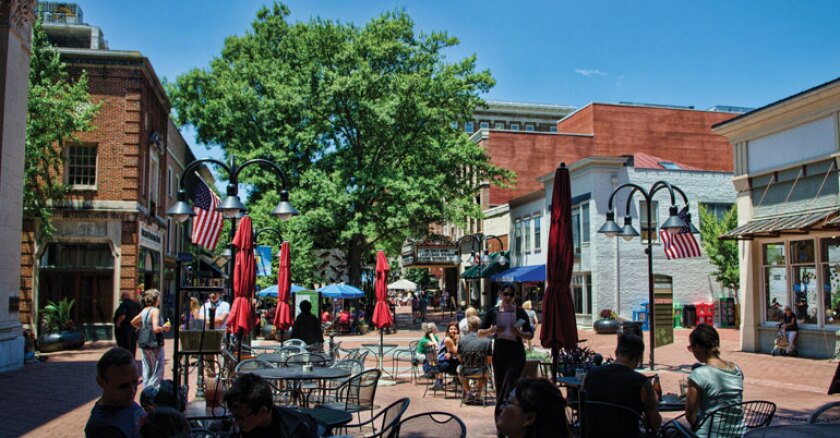That was certainly true of one such pedestrian mall in my hometown of Charlottesville, Va. “You could shoot a gun at five o’clock from one end and not hit anyone on the other,” says Mayor Satyendra Huja. “Because there was nobody there.”
Constructed in 1976 along downtown’s Main Street, the mall was supposed to help revive an antiquated strip of repair shops and dime stores. Officials tapped architect Lawrence Halprin, who chose a red-brick layering that mirrored Thomas Jefferson’s nearby Monticello. The plan was controversial. Businesses thought blocking automobiles would detract customers. Others didn’t like the $4.1 million cost. Even Halprin warned that the mall could take a decade to work. In reality, it took two.
Today, it is one of America’s premier civic spaces, lined with trendy restaurants and boutiques. It wasn’t until the mid-1990s that the mall turned around, providing a blueprint for other cities. What changed?
Simple design changes made it more accessible, says Huja. In the original design, automobiles were given top priority. The mall was encircled by a one-way road that drivers navigated when searching for parking. Because the mall had no cross streets, if drivers couldn’t find parking, they would have to loop around again and again. This turned off drivers and isolated the mall.
So officials took measures to open it up. The one-way loop was converted into two-ways, making the mall’s parallel roads safer, more attractive and easier to turn around on. Two cross streets were built on the mall, increasing visibility. The east end, once bordered by roadways, was reconstructed into a more inviting entrance, marked by a new amphitheater. And pedestrian crosswalks were installed on various blocks outside the mall in every direction. These steps changed downtown from a car zone that happened to have some bricks in the middle, to one where the pedestrian experience began from afar and culminated at the mall.
“You need to be able to see the pedestrian mall before you get there,” Huja says, so that “the experience begins when you park.”
With downtowns growing nationwide, pedestrian mall discussions have resurfaced, making Charlottesville’s example useful. The recipe for success is basic: All these malls should integrate with -- rather than isolate from -- their surroundings.









